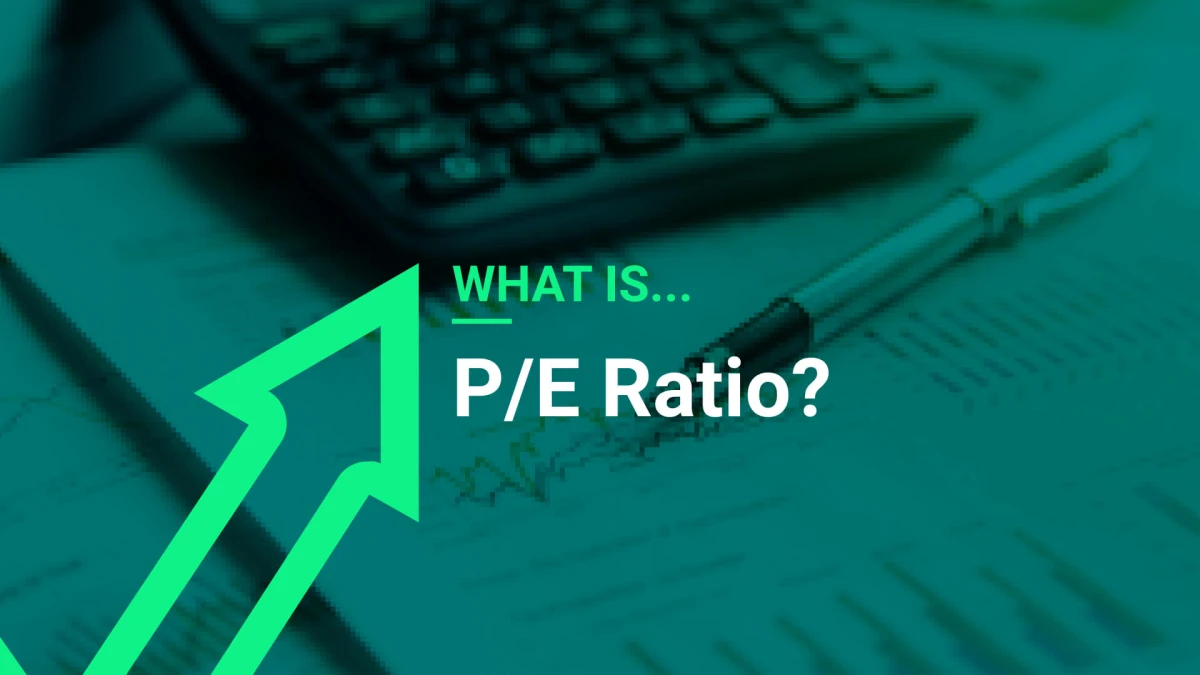P/E or Price-to-Earnings Ratio is calculated by taking the price of a stock and dividing this by the earnings per share (earnings per share is calculated by taking a stock’s net profit and dividing it by the outstanding shares).
P/E is one of the favorite go-to metrics when evaluating a business. The first question usually asked when talking about a stock is “What is the P/E ratio?”. This immediately tells a potential investor how cheap or expensive the stock is.
The ratio essentially tells us the price we are paying for earnings. For example, if the P/E ratio is 20, then, if all things stay constant, it will take us 20 years to get our money back. If a stock is priced at 10p and earns 2p per share, then the PE ratio would be 5. If we hold the shares for five years, then we will earn 10p from the stock – the same amount as the current stock price.
The fundamental problem with the P/E ratio is that it only tells us how the business is valued, not how the company is actually performing.
#How P/E ratio works
P/E ratio is used to gauge the valuation of a stock or index, a higher ratio suggests that the stock is expensive in relation to its earnings. The lower the ratio the less expensive the stock is.

The P/E ratio is useful for investors wanting to compare two or more companies. Comparing two companies by stock price alone does not give an accurate view of the company’s overall valuation or the relative value as an investment.
The P/E ratio is not an accurate indicator of the short-term price movements of a stock. Although there has been evidence of an inverse correlation between the P/E Ratio of the S&P and future returns.
Cheap stocks can often, in reality, be expensive. These are commonly referred to as “value traps”. We can spot a value trap by identifying cheap stocks that are the producers of declining earnings.
For example, the same stock referred to earlier at 10p can be on a PE ratio of 5 with earnings of 2p, but what happens when new earnings are released with the earnings at 1p?
The stock would then currently trade on a PE of 10 – the stock becomes more expensive despite the deterioration in earnings! It would then likely re-rate back to the old PE, and perhaps become even cheaper, as investors realise they are holding a stock that is losing in its battle for profitability.
As investors, you should try to avoid value traps by doing proper due diligence when investigating cheap stocks. They are not always what they seem, and a simple check on the trend in net income (not earnings per share) will tell you whether a stock is cheap because of declining earnings or actually cheap in terms of its growth rate.
P/E is handy to know but an investment decision should never be based on any single metric alone, PEG ratio (Price-to-Earnings-to-Growth ratio) takes into account the PE ratio and then divides this by the business’s growth rate in EPS.
#Types of P/E ratio
While the formula for calculating P/E ratio is fairly simple, there are several ways to factor the price or earnings used for the calculation. Some use the current price of a stock while others use an average price of a stock over a specific period of time.
When it comes to calculating the earnings of a stock there are three varying approaches that can be used and each tell investors different things about a stock. The three approaches to calculating earnings for P/E ratio calculations are:
Trailing Twelve Month Earnings (TTM) – This uses the company’s earnings over the past 12 months. Factoring in historic earnings has the benefit of using reported data and is helpful in the evaluation of companies. Financial websites such as Google Finance and investment apps such as Robinhood use TTM earnings when reporting on P/E ratios.
Forward Earnings – This uses an estimate of a company’s future earnings to forecast how the market expects a company to perform in the coming year.
The Shiller P/E ratio – This approach uses average earnings over a specific time period and is also referred to as the CAP/E ratio. It is calculated by dividing the price by the average earnings over the past ten years with adjustments for inflation. This method is widely favoured to measure the valuation of the S&P 500 index.
#Advantages of P/E ratio
There are many advantages of P/E ratio including:
A popular measure
P/E ratio is widely used in the stock market and for financial stocks such as banks and insurance companies. As a common measure it can make it easier to compare multiple stocks and is a useful analytic tool for investors.
Determine growth potential
Investors can use the P/E ratio to determine the growth potential of a company before they decide to invest in stock. The ratios can highlight which companies can be affected by dramatic price correction, a low P/E ratio shows a sustained growth of a company.
Forecast future prospects
Armed with the P/E ratio, investors can measure the future prospects of a company by looking at the current conditions of the company and comparing it with its past performance. It can also highlight how much is being generated for shareholders.
#Disadvantages of P/E ratio
There are many disadvantages of P/E ratio including:
P/E ratio cannot determine losses at early stages of business growth, which could provide misleading information to investors and lead to poor investment decisions or financial loss.
Increased cost risk
Gearing up or share buy-backs can inflate the earnings of a company, but can also lead to an increased cost of risk for it to be achieved.
Overvalued shares
Investor optimism can cause inflated stock prices across an entire sector. During inflation, the earnings of a company are evaluated based on the currency of the specific country which can increase the P/E ratio. Whereas in a recession, shares are undervalued in terms of their P/E.
